The age-old rivalry between India and Australia is reflected in the size of their stadiums, with both the Narendra Modi Stadium and the MCG capable of hosting more than 100,000 spectators. Where do the other stadiums stand in comparison to these Colosseum-like structures?
The age-old rivalry between India and Australia is reflected in the size of their stadiums, with stadiums from both countries making up this top-ten list. With the ever-expansive nature of cricket, the game is attracting more and more views, especially with the global exposure of the T20 format and the revival of the Test format in recent years with the new points format and World Championship in place.
In this article, I’ll be taking a look at the ten biggest cricket stadiums based on their spectator capacity.
So, without further ado, let’s dive into it and take a look at the world’s biggest cricket stadiums.
#10 JSCA International Cricket Stadium – Ranchi, India
Capacity: 50,000
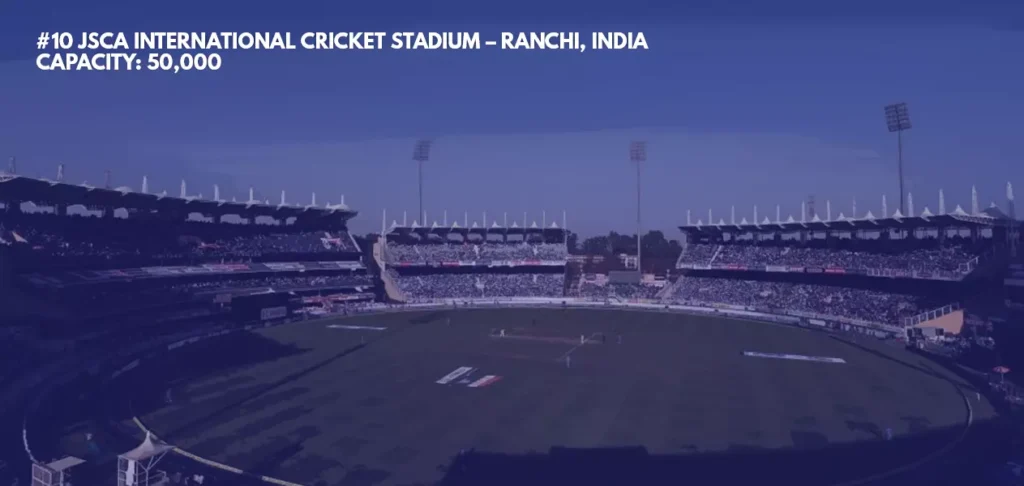
The Jharkhand States Cricket Association (JSCA) International Cricket Stadium was established in 2010 in Ranchi. It cost the state around ?1.9 crore to build, with the design commission going to architectural consultants Kothari Associates Pvt. Ltd. of New Delhi.
The stadium has been constructed in such a way that no shadow falls on any of the nine pitches before 4:45 pm even on the shortest day of the year. The practice area has eight separate pitches, while the maximum capacity is 50,000 with 76 corporate boxes. Besides, spectators can also enjoy the action from the two nearby hills on the East and West sides called the East and West Hills, making it the only stadium in the country with hills on both sides.
#9 M. A. Chidambaram Stadium – Chennai, India
Capacity: 50,000
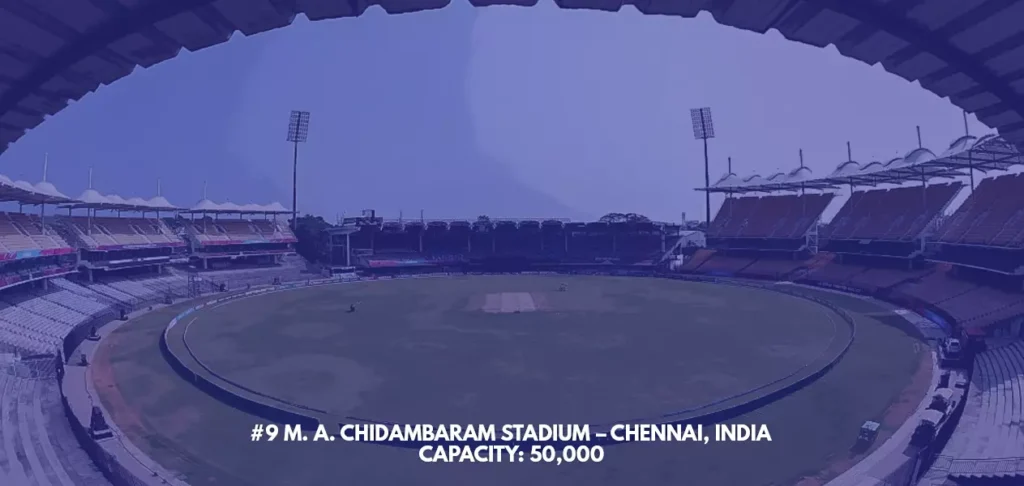
Established in 1916, the M.A. Chidambaram Stadium is the second-oldest stadium in India, behind only the Eden Gardens. Formerly known as the Madras Cricket Club Ground, the stadium has been named after M. A. Chidambaram Chettiar, former president of the BCCI and Head of the Tamil Nadu Cricket Association. It is also the home ground of the Tamil Nadu cricket team and IPL franchise Chennai Super Kings.
In June 2009, renovation work on the stadium was taken up at a reported cost of ?175 crore. The plan was to have concrete stands designated as I, J and K, accommodating 12,000 spectators and 24 hospitality boxes under the PTFE membrane roofs. The stadium can currently accommodate 50,000 spectators, while the stands are at a gradient of 36° and let the sea breeze in to get the ground’s traditional swing back.
#8 Adelaide Oval – Adelaide, Australia
Capacity: 53,583
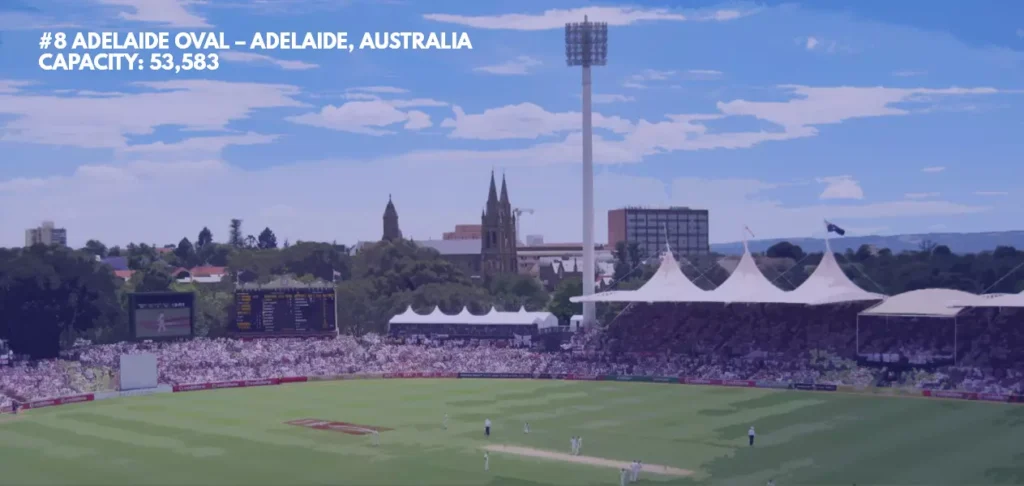
The Adelaide Oval has been headquarters to the South Australian Cricket Association (SACA) since 1871 and the South Australian National Football League (SANFL) since 2014. The ground is managed by the Adelaide Oval Stadium Management Authority and has played hosts to rugby league, rugby union, tennis, football and cricket among many other sports while being regularly used to hold concerts as well.
The ground hosted its first Test match in 1884 between hosts Australia and England. It became the first ground to host a day-night Test match between Australia and New Zealand on 27 November 2015. Its record crowd for cricket was 55,317 for the second Ashes Test on 2 December 2017, while its record for an Australian rules football match was 62,543 at the 1965 SANFL Grand Final between Port Adelaide and Sturt.
#7 Greenfield International Stadium – Thiruvananthapuram, India
Capacity: 55,000
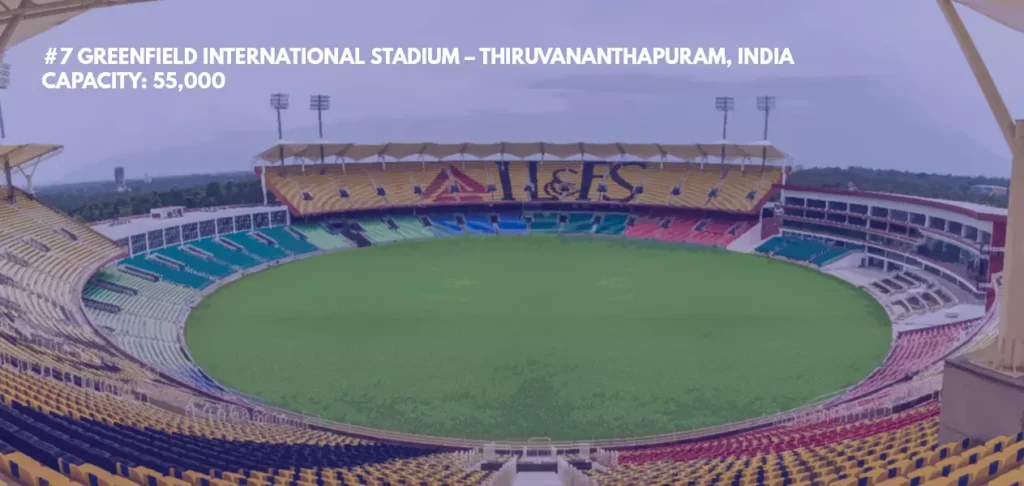
The Sports Hub, Trivandrum, commonly known as Greenfield International Stadium and formerly known as Trivandrum International Stadium, is a multi-purpose stadium in Kerala used mainly for association football and cricket. Built on 36 acres of land leased by the University of Kerala for ?94 lakh per year for a period of 15 years, it is India’s first DBOT (Design, Built, Operate and Transfer) model outdoor stadium.
The playing arena in the stadium has been constructed in line with FIFA regulations and ICC norms, with a seating capacity for 55,000 spectators. Besides, it is the first fully eco-friendly stadium in India surrounded by green plants and also housing a rain harvesting facility. The State Environment Impact Assessment Authority and Pollution Control Board have commended the builders for their green initiative.
#6 Rajiv Gandhi International Stadium – Hyderabad, India
Capacity: 55,000
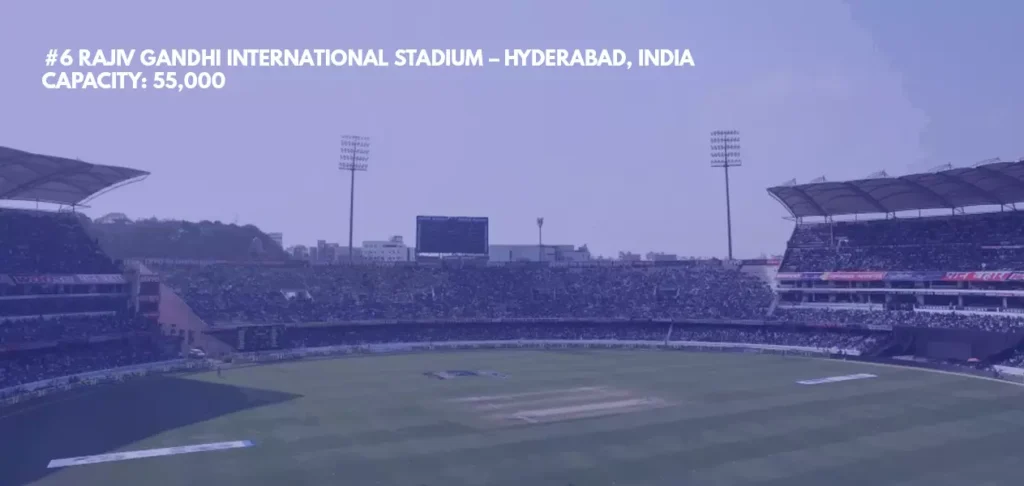
The Rajiv Gandhi International Cricket Stadium in Hyderabad can hold a capacity of 55,000 spectators and extends across 16 acres of land. Since its inauguration in 2003, it has hosted five Test matches, six ODIs and two T20Is. It is also the home ground of Hyderabad Cricket Association and IPL franchise SunRisers Hyderabad.
The Rajiv Gandhi International Stadium was venue for both the season-opener and the season finale for IPL 2017, which it followed up with the 2019 IPL final.
#5 Perth Stadium – Perth, Australia
Capacity: 61,266
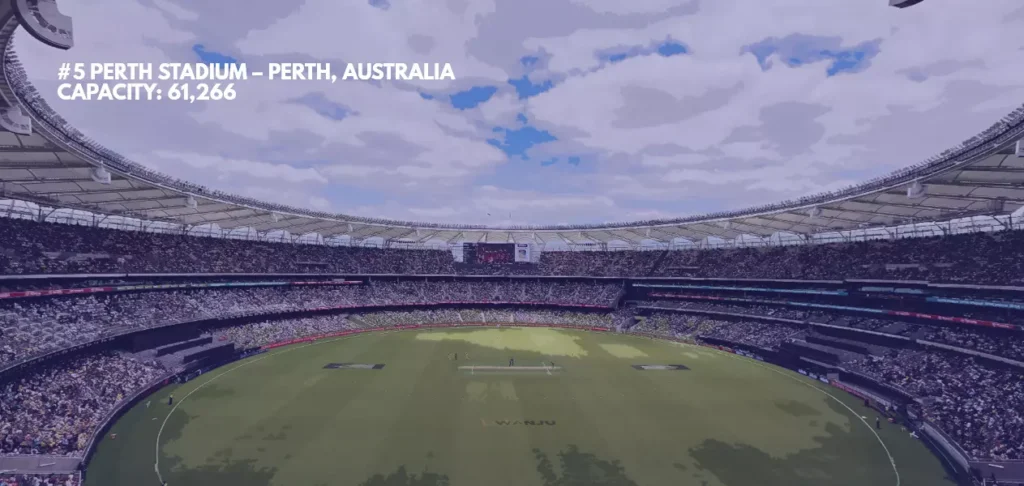
Perth Stadium, also known due to naming rights sponsorship as Optus Stadium, is a multi-purpose stadium in Perth, Western Australia. It was completed in December 2017 and officially opened on 21 January 2018. The stadium’s total capacity is 61,266 (including standing room), making it the third-largest stadium in Australia.
The field of the stadium is 165m (541ft) long and 130m (430ft) wide, 5m (16ft) longer than both the Melbourne Cricket Ground and Docklands Stadium in Melbourne, but 10m (33ft) shorter than Subiaco Oval, which is 175m x 122m. It is a multi-purpose facility able to hold not only sporting events such as rugby union, cricket, football, but also major cultural events such as concerts.
#4 Shaheed Veer Narayan Singh International Cricket Stadium – Raipur, India
Capacity: 65,400
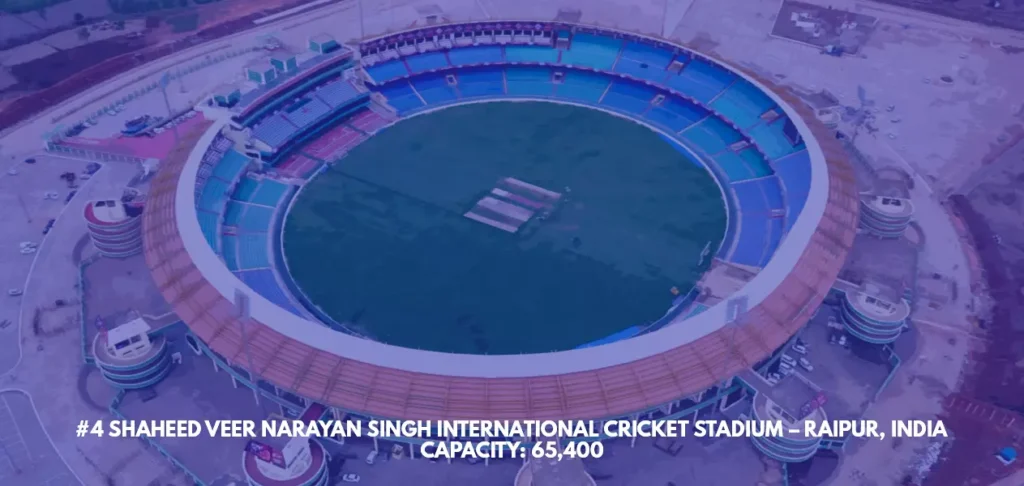
It is the third-largest cricket stadium in India and the fourth-largest in the world. The stadium has a seating capacity of 65,400 and was inaugurated in 2008. However, it was not until 2010 that a match was played there, when the Canada national team arrived in India and played a practice game against the Chattisgarh team.
In 2013, the stadium was declared as the second home of the Delhi Daredevils (now Delhi Capitals) franchise and has since hosted many IPL games. The stadium is named after Veer Narayan Singh Binjhwar, a landlord from Sonakhan who spearheaded the 1857 war of Indian independence in Chhattisgarh.
#3 Eden Gardens – Kolkata, India
Capacity: 68,000
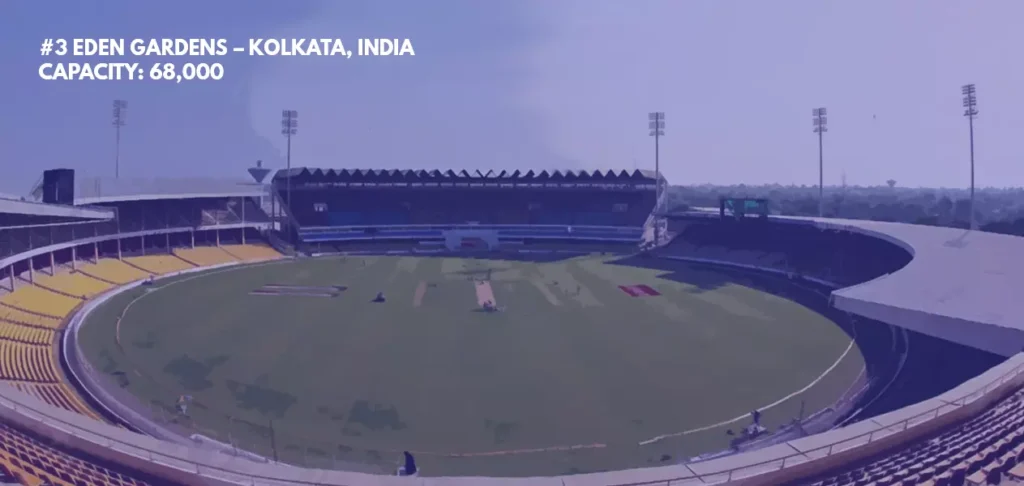
Established in 1864, it is the oldest and second-largest stadium in India and the third-largest in the world. The Eden Gardens is often referred to as the home of Indian cricket, while being also referred to as “cricket’s answer to the Colosseum”. Due to it being the first officially built ground for the game of cricket in India, the Eden Gardens is also known as “Mecca of Indian Cricket”.
Moreover, despite the fact that the current layout can hold a capacity of 68,000 spectators, the 1987 ICC Cricket World Cup saw a record 95,000 spectators turn up to witness the final between England and Australia. Besides this, the Eden Gardens has also hosted three other ICC tournament finals, namely: the 2016 ICC Men’s T20 World Cup final, the 2016 ICC Women’s T20 World Cup final, and the 1997 Women’s Cricket World Cup Final.
#2 Melbourne Cricket Ground – Melbourne, Australia
Capacity: 1,00,024
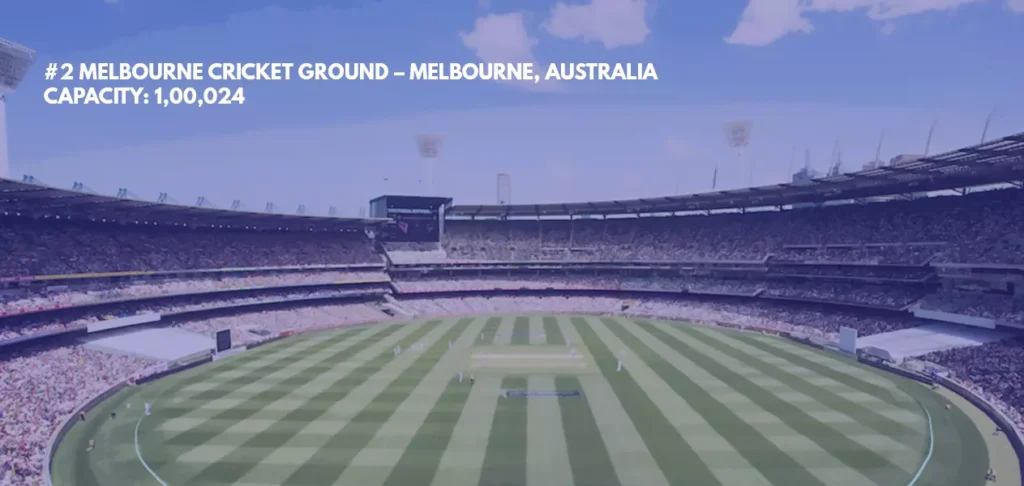
Since it was built in 1853, the Melbourne Cricket Ground (MCG) has served as the centrepiece for some of the most notable sporting moments in Australian and world history. The MCG is known for its role in developing international cricket, having hosted both the first Test match to be ever played in 1877 and then the first ODI match between England and Australia in 1971. It also served as the host venue to the 1956 Summer Olympics, the 2006 Commonwealth Games, and the two men’s ICC Cricket World Cups in 1992 and 2015.
Known locally as “The G”, the MCG is the largest stadium in the southern hemisphere, the eleventh-largest globally, and the second-largest cricket stadium in the world. It has a maximum capacity of 95,000 spectators, while there is standing room for more than 5,000 spectators, taking the total count to just over 1,00,000. Apart from cricket, the MCG has hosted many other sporting events as well, such as rugby league, rugby union, tennis and various concerts. It is also set to host the final of the upcoming 2022 ICC Men’s T20 World Cup.
#1 Narendra Modi Stadium – Ahmedabad, India
Capacity: 1,32,000
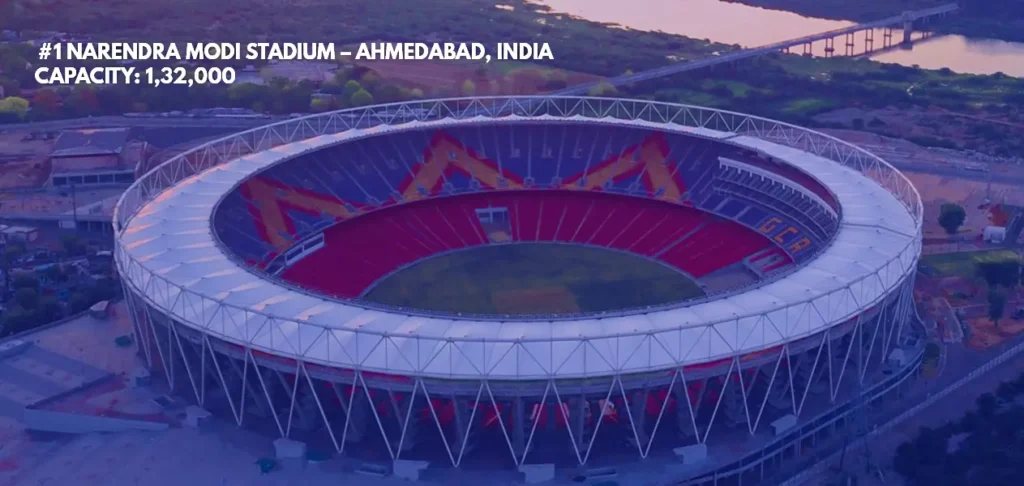
Situated inside the Sardar Vallabhbhai Patel Sports Enclave in Ahmedabad, the Narendra Modi Stadium—as of 2022—is the largest cricket stadium in the world with a seating capacity of 1,32,000 spectators. Constructed in 1983, the stadium was first renovated in 2006 as the ground was due to host five out of the fifteen matches to be played during the 2006 ICC Champions Trophy held in India. Subsequently, it rose as one of the hotspot venues for international cricket in India.
However, in 2015, the stadium was demolished for reconstruction, though some media outlets reported it as renovation. The final cost of the reconstruction was reported at ?800 crore (US$100 million approx.). With the rebuilding of the stadium completed around February 2020, on 24 February 2021, the stadium was renamed as the Narendra Modi Stadium by the Gujarat Cricket Association (GCA) after the current Prime Minister of India, Narendra Damodar Modi, a Gujarat native, who also served as the president of the GCA (2009–2014) and the Chief Minister of Gujarat from 2001–2014.
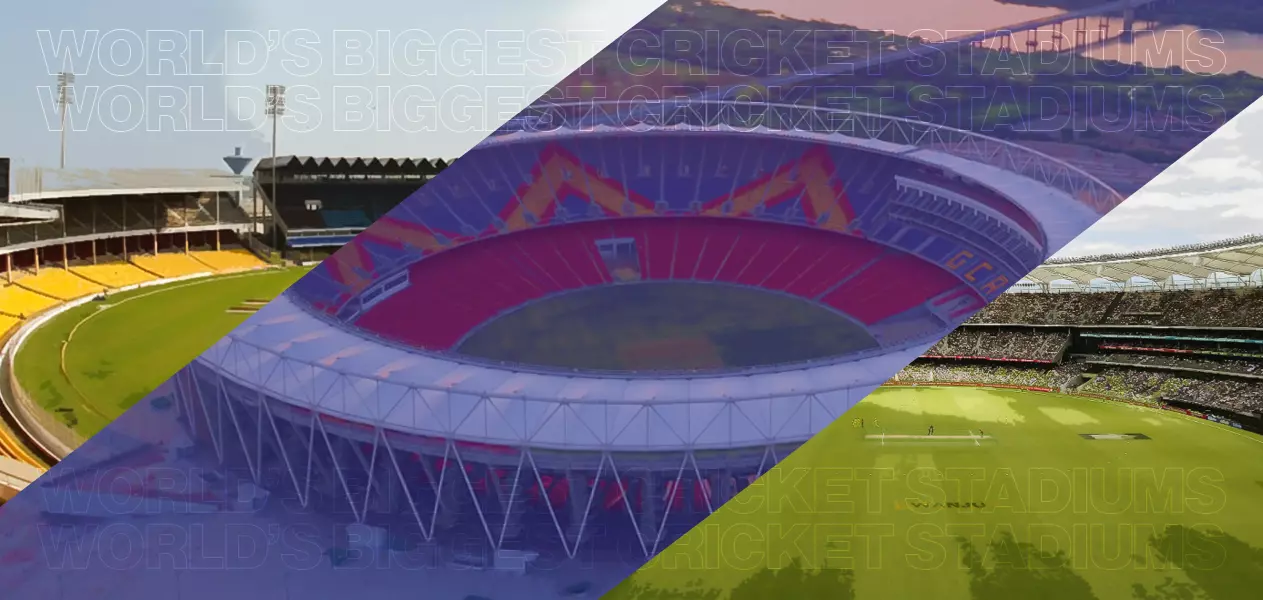


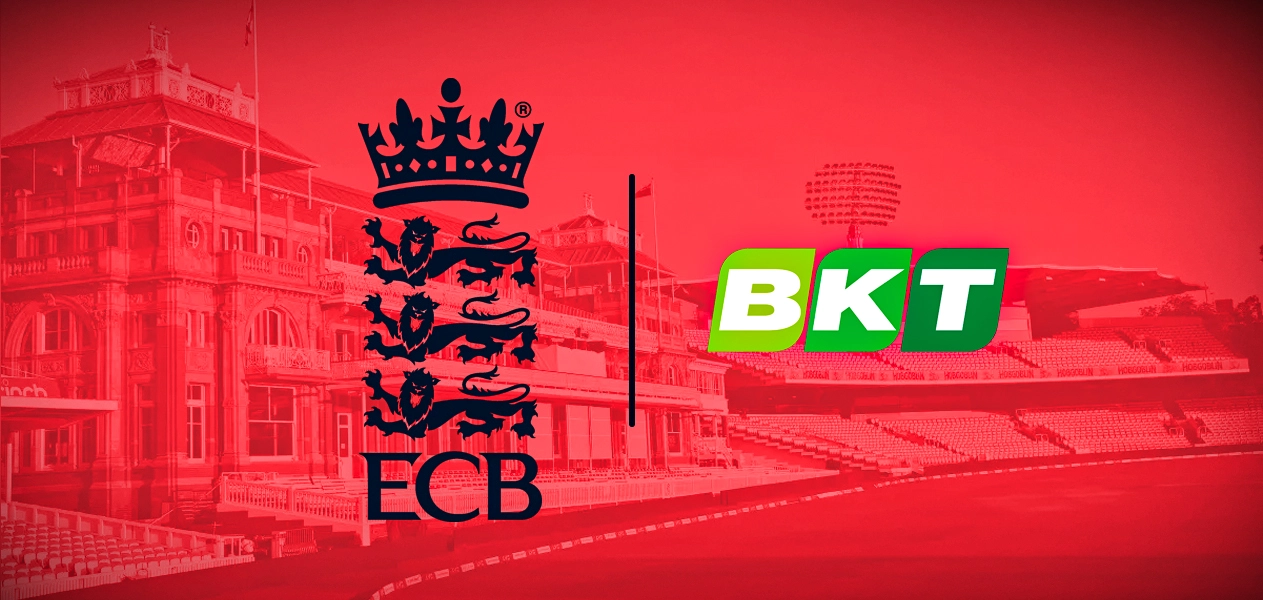


Leave a Reply